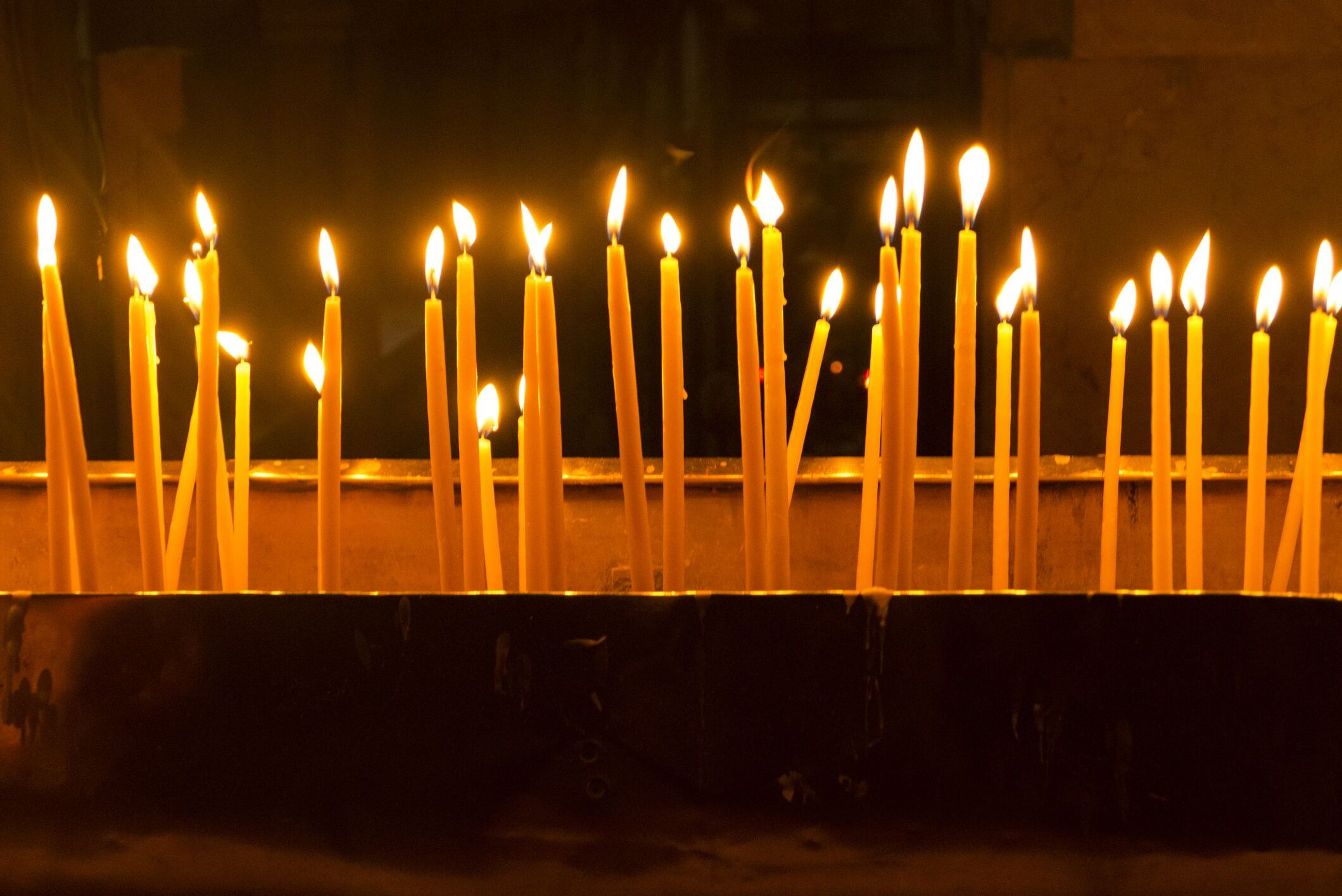
Holy Saturday is a day filled with reflection and anticipation for many Christians around the world. It marks the day between Good Friday and Easter Sunday, a time when Jesus lay in the tomb after his crucifixion. This day is often observed with solemnity, prayer, and fasting. But what else do you know about this significant day? Did you know that Holy Saturday is also known as the Great Sabbath or Black Saturday? It's a day that carries deep historical and spiritual significance, with traditions varying widely across different cultures and denominations. From ancient rituals to modern practices, Holy Saturday offers a rich tapestry of customs and beliefs that continue to inspire and unite believers. Ready to learn more? Here are 40 intriguing facts about Holy Saturday that might surprise you!
What is Holy Saturday?
Holy Saturday, also known as the Great Sabbath, is a significant day in the Christian liturgical calendar. It marks the day between Good Friday and Easter Sunday, commemorating the time Jesus Christ lay in the tomb after his crucifixion.
-
Holy Saturday is the last day of Holy Week. It concludes the period of Lent, a 40-day season of fasting and penance.
-
It is also called the Easter Vigil. This is because many Christian denominations hold a vigil service on this night, anticipating the resurrection of Jesus.
-
The day is known as the Great Sabbath in Eastern Christianity. This name reflects the belief that Jesus rested in the tomb on this day, similar to how God rested on the seventh day after creation.
-
In the Roman Catholic Church, no Mass is celebrated during the day. The altar remains bare until the Easter Vigil, symbolizing the mourning and waiting for Christ's resurrection.
-
The Easter Vigil is one of the most important liturgies of the year. It includes the blessing of the fire, the lighting of the Paschal candle, and the singing of the Exsultet.
Traditions and Customs
Holy Saturday is rich with traditions and customs that vary across different cultures and Christian denominations.
-
In some cultures, people clean their homes on Holy Saturday. This symbolizes purifying their lives in preparation for Easter.
-
In Poland, people prepare baskets of food to be blessed. These baskets often contain eggs, bread, and other foods that will be eaten on Easter Sunday.
-
In the Philippines, Holy Saturday is a day of silence and reflection. Many Filipinos participate in processions and other religious activities.
-
In Italy, people light bonfires on Holy Saturday night. This tradition symbolizes the light of Christ coming into the world.
-
In Greece, people prepare a special soup called "magiritsa." This soup is traditionally eaten after the midnight service on Holy Saturday.
Symbolism and Significance
The symbolism and significance of Holy Saturday are profound, reflecting themes of waiting, hope, and renewal.
-
Holy Saturday symbolizes the time of waiting and hope. Christians believe that Jesus' followers waited in hope for his resurrection.
-
The Paschal candle represents Christ as the light of the world. It is lit during the Easter Vigil and remains in the church throughout the Easter season.
-
The blessing of the fire symbolizes the victory of light over darkness. This ritual is a powerful reminder of Christ's resurrection.
-
The empty tomb is a central symbol of Holy Saturday. It represents the hope and promise of resurrection.
-
The silence of Holy Saturday reflects the mourning of Jesus' death. It is a day of quiet reflection and anticipation.
Historical Context
Understanding the historical context of Holy Saturday can provide deeper insight into its significance.
-
Holy Saturday has been observed since the early days of Christianity. Early Christians would gather to pray and keep vigil, waiting for the resurrection.
-
The Easter Vigil has roots in ancient Jewish traditions. The vigil mirrors the Jewish practice of keeping watch during Passover.
-
The Council of Nicaea in 325 AD formalized the observance of Holy Saturday. This council established many of the practices still followed today.
-
Early Christians would often fast on Holy Saturday. This practice symbolized mourning and preparation for the joy of Easter.
-
The tradition of blessing the fire dates back to the early church. It was a way to symbolize the new light of Christ's resurrection.
Modern Observances
Holy Saturday continues to be observed in various ways around the world, reflecting both ancient traditions and modern practices.
-
Many churches hold a special Easter Vigil service. This service often includes readings, hymns, and the lighting of the Paschal candle.
-
In some communities, people participate in processions. These processions often reenact the burial of Jesus.
-
Holy Saturday is a day of preparation for Easter celebrations. Many people spend the day cooking, cleaning, and preparing for the festivities.
-
In some cultures, people dye eggs on Holy Saturday. These eggs are often used in Easter Sunday celebrations.
-
In the Orthodox Church, Holy Saturday is a day of strict fasting. This fast is broken after the midnight service with a festive meal.
Holy Saturday in Art and Literature
Holy Saturday has inspired many works of art and literature, reflecting its deep spiritual significance.
-
Many artists have depicted the events of Holy Saturday. These works often focus on the themes of waiting and hope.
-
Literature often explores the emotional aspects of Holy Saturday. Writers have used this day to reflect on themes of loss and renewal.
-
Holy Saturday is a common subject in religious music. Many hymns and songs have been written to commemorate this day.
-
The Easter Vigil service often includes dramatic elements. These elements, such as the lighting of the Paschal candle, add to the emotional impact of the service.
-
Holy Saturday has been the subject of many sermons. Preachers often use this day to reflect on the themes of waiting and hope.
Global Variations
Holy Saturday is observed in different ways around the world, reflecting the diverse traditions and customs of various cultures.
-
In Spain, people participate in solemn processions. These processions often include statues of Jesus and Mary.
-
In Mexico, people create elaborate altars. These altars often include flowers, candles, and images of Jesus.
-
In Russia, people bake special Easter bread. This bread, called "kulich," is often blessed in church on Holy Saturday.
-
In Ethiopia, Holy Saturday is a day of fasting and prayer. Many people attend church services and participate in processions.
-
In the United States, many churches hold Easter egg hunts. These hunts often take place on Holy Saturday, adding a festive element to the day.
Personal Reflections
Holy Saturday offers an opportunity for personal reflection and spiritual growth.
-
Many people use Holy Saturday as a day of prayer. This time of quiet reflection can be a powerful spiritual experience.
-
Some people write in journals on Holy Saturday. Reflecting on the themes of waiting and hope can provide personal insights.
-
Holy Saturday can be a time to connect with family. Many families spend the day together, preparing for Easter celebrations.
-
Volunteering is a common activity on Holy Saturday. Helping others can be a meaningful way to reflect on the themes of the day.
-
Holy Saturday can be a time to reflect on personal growth. Considering how one has grown spiritually during Lent can be a rewarding experience.
Reflecting on Holy Saturday
Holy Saturday stands as a day of reflection and anticipation. It bridges the sorrow of Good Friday with the joy of Easter Sunday. Many Christian traditions observe this day with solemn vigils, prayers, and meditations on the sacrifice of Jesus. It's a time to contemplate the significance of the resurrection and what it means for faith and salvation.
This day also carries various cultural and regional customs, from blessing food in Eastern Europe to lighting the Paschal candle in Western churches. Each tradition adds a unique layer to the rich tapestry of Holy Saturday's observance.
Understanding these facts about Holy Saturday can deepen one's appreciation for its importance in the Christian calendar. Whether through quiet reflection or community gatherings, this day offers a moment to pause and prepare for the celebration of Easter.
Was this page helpful?
Our commitment to delivering trustworthy and engaging content is at the heart of what we do. Each fact on our site is contributed by real users like you, bringing a wealth of diverse insights and information. To ensure the highest standards of accuracy and reliability, our dedicated editors meticulously review each submission. This process guarantees that the facts we share are not only fascinating but also credible. Trust in our commitment to quality and authenticity as you explore and learn with us.


